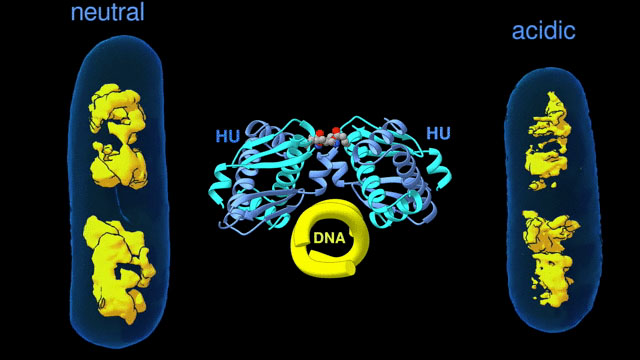How Proteins Remodel DNA in Bacteria Under Stress
08/29/2020

Changes in the architecture of a bacterial chromosome during adaptation to an acidic environment are controlled by the DNA binding protein called HU (shown in shades of blue) and its interaction with DNA (yellow). [Credit: Michal Hammel/Lawrence Berkeley National Laboratory]
When bacteria are put in different environments, they can begin to quickly adapt because the proteins that make up their chromosomes can pack and unpack rapidly, regulating gene expression. In bacteria, the proteins responsible for DNA packing are called HU proteins.
To examine the DNA packing process under various conditions, researchers visualized the interactions between DNA and HU from Escherichia coli at the micro-, meso-, and nanoscales using soft x-ray tomography, small-angle x-ray scattering, and protein crystallography.
Related Links
- BER Resource: Structurally Integrated Biology for the Life Sciences
- Feature Story: How Proteins Remodel DNA in Bacteria under Stress
References
Remesh, S. G., et al. 2020. “Nucleoid Remodeling During Environmental Adaptation Is Regulated by HU-dependent DNA bundling,” Nature Communications 11, 2905. [DOI:10.1038/s41467-020-16724-5]
